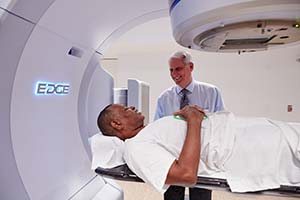Is It Breast Cancer? Maybe Not.
As women grow and shift into different seasons of womanhood, their breasts do too. Over a woman’s lifetime, her breasts may change in look and feel for many reasons, including, but not limited to:
- Hormones
- Aging
- Breastfeeding
- Injury
Waking up to sharp pain, spotting nipple discharge on your clothes or noticing a new lump within your breast can be alarming. However, it is important to remember that many non-cancerous conditions may cause these symptoms.
Eight Breast Conditions That Are Not Cancer
When visiting a provider about breast changes, he/she may perform a breast exam and request imaging to screen for a variety of breast conditions, including:
- Mastitis- Mastitis occurs when there is swelling in the breast. While mastitis is most common in women who are breastfeeding, it can occur at other points in a woman’s life. It is sometimes accompanied by fever and headaches. A doctor may prescribe antibiotics to treat the conditions.
- Fibroadenomas- Fibroadenomas are the most common breast lumps in younger women with periods. This type of breast lump often causes no pain. A fibroadenoma may feel like a firm, rubbery marble within the breast. Most fibroadenomas grow slowly. If you are diagnosed with fibroadenomas, your physician will want to monitor any changes through regular breast exams.
- Calcification- This occurs when calcium collects in the breast. You may not know you have breast calcification, but your doctor may see calcification as a bright white speck or dot in your breast tissues on a mammogram. These are common after menopause and are generally connected to benign cell changes.
- Fat Necrosis- Fat necrosis develops when breast tissue is injured. Fat necrosis may form an oil cyst, making the skin around the affected area thicker, bruised or red. Usually, fat necrosis does not need treatment, but if it becomes painful, a doctor may recommend surgical removal.
- Nipple Discharge- In many cases, nipple discharge is normal and results from fluctuating hormones. Discharge from a normal, healthy breast is called physiological discharge. During some parts of a woman’s life, like breastfeeding, nipple discharge may be expected and welcomed!
- Lobular carcinoma in situ (LCIS)- This condition is uncommon but occurs when abnormal cells form in milk glands in the breast. While LCIS is not cancer, it may increase your risk for cancer. This condition is most often diagnosed during breast biopsies performed for other reasons.
- Duct Ectasia- Duct ectasia occurs when a milk duct widens and thickens. Sometimes this can cause the milk duct to become blocked. While duct ectasia is more common for women close to menopause, it can occur at other ages.
- Fibrocystic Breast Changes- Fibrocystic breast changes happen when the tissue thickens. The affected breast tissue may feel firm or rubbery underneath the skin. This change in women is very common; almost one-half of women will experience a fibrocystic breast change. Hormonal changes are the main culprit.
Make Time for a Mammogram
What is the best thing you can do for your breast health? Schedule regular breast screenings, like mammograms, and perform monthly self-breast exams. Knowing what your breasts feel like typically can help you identify changes and know when to bring any concerns to your provider.
If you notice something new or experience unexpected pain, do not hesitate to contact your provider. Our care teams are here to walk you through every step of your healthcare journey.
Sources:
American Cancer Society
Breast Cancer Now
Cancer Research UK
National Institutes of Health


